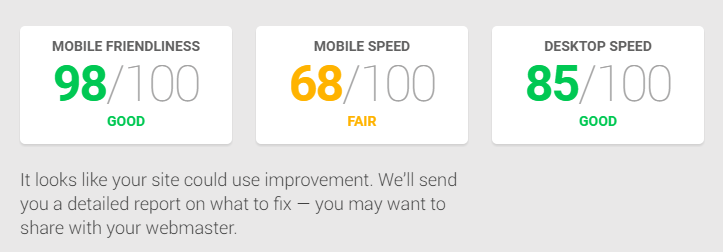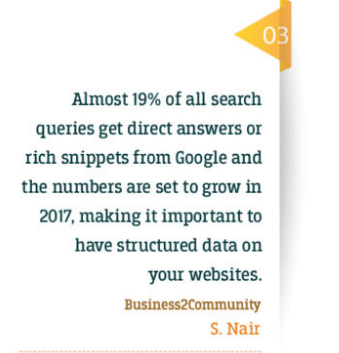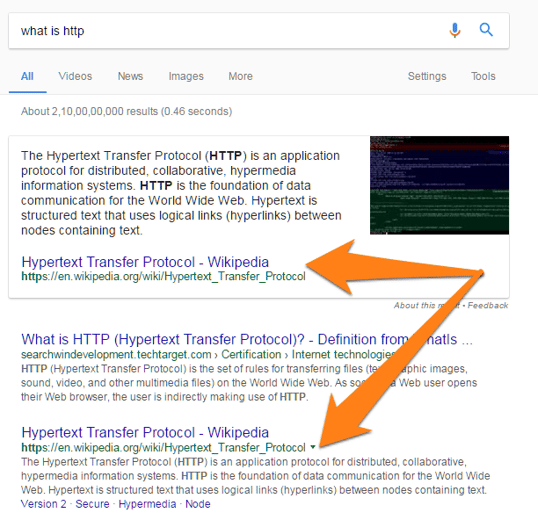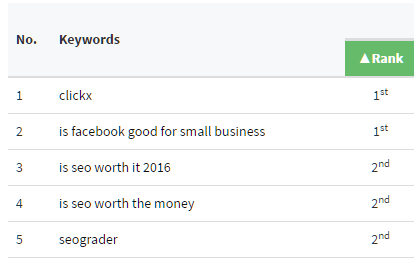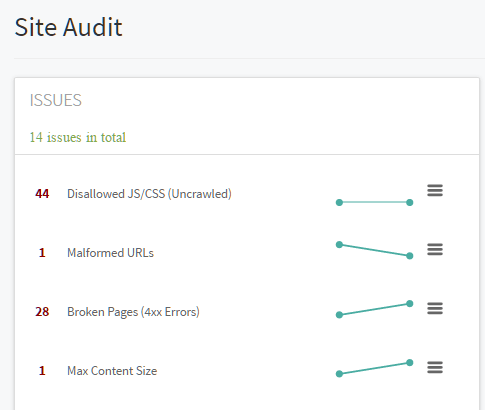3 Powerful SEO Tips You Need to Follow in 2023
There are big changes afoot in the world of SEO. SEO techniques that used to work earlier are slowing becoming obsolete. Rapid advancements in AI, changing search patterns and the ever growing use of voice as an interface threaten to change the SEO landscape completely.
In 2023, you can’t afford to let your rankings slip by following outdated SEO tips and techniques. If you haven’t analyzed your organic performance over the last year, now is the time to re-evaluate, re-organize and renew the way you do SEO.
What SEO tips should you follow to rank well in 2023? Which platforms should you focus on, which ones should you avoid? What link building tactics should you pursue to succeed this year?
We’ll show you answers to all these questions and more below.

3 Trends that are Changing SEO and Marketing
First, let’s examine a few macro trends that are going to affect search in the near and far future. These trends are bigger than SEO; they are going to impact marketing as a whole.
1. Rise of AI powered search
Back in 2014, Google acquired a well-funded British Artificial Intelligence (AI) startup called DeepMind. DeepMind focused on neural networks, which is a computational approach to solving complex problems the way human beings would – by actively gathering feedback and learning from the environment.
In AI terms, this process of learning is called machine learning.
Late last year, Google debuted a new addition to its Hummingbird algorithm called “RankBrain”. RankBrain uses machine learning to sort and display search results for queries that don’t contain exact keywords. Instead of simply displaying the result with the closest keyword match, RankBrain “learns” from the query to figure out the answer as a human would.
This is why Google can answer questions like these directly:
Considering that 20% of searches in Google are entirely new, you can see a lot of applications of such AI-powered search.
How it will impact SEO
As Google continues to use machine learning in its algorithm, it will slowly turn into an “answer engine” instead of just a “search engine”.
You can already see this in a number of queries with short answers. If you type in “who is the director of When Harry Met Sally”, you’d see this result instead of an IMDb page:
If you’re a SEO, you’ll have to shift focus away from such “single-word answer” queries and start focusing on queries that demand more content depth.
2. Growth of voice search
If CES 2023 is anything to go by, the one trend that will define 2023 is voice computing.
Amazon regularly sells out its massively popular Alexa and Echo voice-controlled speakers. Respected analyst Mary Meeker says voice computing will rise “exponentially” in the next few years. And even Google admits that nearly 20% of all its queries on mobile are voice based.
This push towards voice search is being fueled by two factors:
- Higher smartphone ownership: The number of smartphone users crossed 2.1 billion in 2016 – more than 25% of the world’s population. Access to smartphone equals access to voice search.
- Better voice recognition: Google’s voice recognition now boasts an accuracy of nearly 90% – nearly as good as human beings. As this improves, more and more people will turn to voice search.
Of course, AI-powered search – which can deliver answers instead of results pages – helps in this aspect as well. With Google predicting that 50% of all its searches will be on voice-based by 2020, voice search will becoming extremely important in the near future.
How it will impact SEO
The way users use voice is very different from the way they type-in queries. Instead of keywords, voice-based searches are far more likely to use natural language queries (“what is the name of Queen Elizabeth’s son” instead of “Queen Elizabeth son”).
For SEOs, this means focusing more on content and less on exact keywords. Your job should be to give the reader the answer as quickly and directly as possible with your content. Ideally, you’d want your site to show up in Google’s “rich snippets”. Else you might miss out on traffic through voice searches.
3. Rising popularity of mobile assistants and chatbots
In April last year, Facebook opened its platform to let developers make automated “chatbots”. These bots are virtual assistants that can automatically perform a number of functions, from fetching the day’s news to queuing up social media posts.
Within two months, Facebook already had 11,000+ chatbots operating on its platform. These ranged from a bot to order flowers to a bot that would help you track your flight. Even the business world isn’t far behind – collaboration app Slack already boasts hundreds of bots.
Besides chatbots, there has also been an exponential increase in the popularity of virtual assistants. These assistants – like Cortana (Microsoft), Siri (Apple) or Google Now (Google) – can help you perform complex tasks. They can book tables for you, set reminders, and even tell you jokes.
With deeper smartphone penetration and widespread messaging app use, these chatbots and assistants will only become more popular.
How it will impact SEO
Users will increasingly turn to assistants and chatbots to find answers to their queries (instead of searching Google directly).
This makes the top most result more coveted than ever. Virtual assistants will likely pull data from the top few results instead of showing users a list of 10 results.
This also means that you’ll have to start formatting content for virtual assistants.
SEO Tips to Dominate SERPs in 2023
We’ve seen the trends that are likely to dominate SEO in 2023 and beyond. The question now is: how do you change your SEO to take advantage of these trends?
Below, we’ll share some SEO tips to help you scale your ranking goals in 2023.
1. Optimize your mobile experience
With the ‘Mobilegeddon update, Google has already made it clear that it wants to push mobile-friendly sites in the SERPs. It even launched a a href=”https://testmysite.thinkwithgoogle.com/”>full-fledged site testing tool to help webmasters make the shift to mobile.
Google’s reason for doing this are obvious enough: a site that doesn’t render well on mobile makes for a poor user-experience. In fact, research shows that people are 5x more likely to leave a site if it isn’t mobile-friendly.
Your biggest website goal in 2023, therefore, should be to optimize your mobile experience.
Here are a few ways you can do that:
A. Test existing mobile performance
Start by testing your existing mobile performance with Google’s testing tool. Enter your URL here and hit “Test Now”.
You should see a score similar to this below:
Your mobile-friendliness score should be at least above 80. If not, follow the steps below to improve it.
B. Use mobile-friendly design
It goes without saying that you should use a mobile-friendly design in 2023. A responsive design is the bare minimum. Beyond that, however, there are a number of steps you can take as well:
Use large buttons to make tapping easier. For example, consider how Shutterfly uses large buttons on its homepage to make navigation easier.
Change menus from text to buttons. Text-based mega menus look good on desktops but render horribly on mobile sites. Consider changing from text to more graphical menus.
For example, consider how Typeform uses buttons for its menu items:
Use large fonts. You want your text to be readable even on small screens. Consider increasing font-sizes for mobile users.
For example, see how HuffingtonPost’s website uses large fonts for mobile users.
C. Remove interfering elements
If you have pop-up or pop-unders on your site (either for opt-ins or for ads), you probably won’t meet Google’s mobile-friendliness guidelines.
You can either try using mobile-friendly pop-ups, or remove them altogether for mobile users.
The same goes for mega menus. Consider replacing them with simpler menus that club multiple category pages together.
For example, HuffingtonPost uses a simple menu for mobile users, clubbing content from multiple categories under individual category-heads.
D. Optimize content for mobile readers
How people read on mobiles is very different from how they read on desktops. A 3,000 word blog post might be digestible for desktop users, but mobile users will quickly become bored scrolling through paragraph after paragraph.
Here’s how you can optimize your content for mobile readers:
Offer short summaries before main content. Give your readers a short summary with the key takeaways from the article at the top of the page. This has the added benefit of helping you rank in featured snippets (see below).
Use visuals to break content into sections. Visuals are much easier to digest than written content. Besides summarizing an argument, you can also use them to divide your content into smaller sections.
If you take the above steps, you’ll find your site meeting Google’s mobile-friendliness requirements and dominating mobile results.
2. Get a featured snippet
As we mentioned in our earlier infographic, roughly 19% of Google queries now feature a “rich answer”.
These featured snippets or rich answers give users quick answers to their queries. These can be interactive, like this:
More often than not, these snippets summarize a web page, like this:
Featured snippets aren’t always taken from the top ranking result. In the above example, Wikipedia actually ranks #2 for “HTTP”. Yet, because it got featured in the rich answer, it occupies the top spot – and gets the bulk of the traffic.
Getting a featured snippet helps you in two ways:
- Get more traffic without changing your rankings: The topmost result invariably accounts for the maximum number of clicks. By getting a featured snippet, you can get more clicks and traffic without an underlying change in your rankings.
- Get more traffic from voice searches and chatbots: The featured snippet is often the result used when answering questions via voice search. Chatbots also pull-in data from the featured snippet to answer queries. Getting a featured snippet can get you traffic from these additional sources.
How to get a featured snippet
Unfortunately, there is no guaranteed way to get a featured snippet – it is entirely up to Google’s algorithm.
However, you can greatly increase your chances of getting a snippet by taking these steps:
A. Target top keywords
Google usually pulls a featured snippet from the first 3 results. Start by only targeting keywords you rank between position 1-3 for.
In ClickX, you can do this by going to Dashboard -> Keywords and sorting keywords by ranking.
B. Summarize content at the top of the page
If you see any featured snippet, it usually has two key features:
- It summarizes the article within 100-150 words.
- It uses simple, easy to understand language.
Try doing this for all content on your top performing keywords.
If you can follow these two steps, you’ll likely get a featured snippet spot for at least 10-30% of your target keywords.
3. Improve your user-experience
The line between user-experience optimization and SEO is beginning to blur. While Google doesn’t state exactly which on-page user-experience factors is includes in its algorithm, it is increasingly clear that Google’s mission is to give its users the best experience possible.
This means weeding out slow loading pages, badly designed sites, and untrustworthy results from the SERPs. If your site doesn’t offer visitors a stellar user-experience, you’ll struggle to rank well – even with a strong off-site SEO plan.
There are a number of things you can do to improve user-experience such as:
A. Improve site speed
Site speed has been an official ranking signal for over 6 years now. But with the growth of mobile search, Google has been clamping down harder on slower sites.
Improving your site will have an immediate effect on your user-experience. Ideally, you should aim for a load time under 2 seconds (use Pingdom to check your current load time).
Here are a few things you can do right away to get a faster load time:
- Serve your static content (such as images or media) from a cloud server that uses a CDN (such as Cloudfront)
- Optimize images before adding them to your site. You can use Kraken.io to do this automatically via API calls. For a manual solution, try RIOT image optimizer.
- Use browser caching. If you’re on WordPress, this is as easy as installing a plugin like WP Total Cache or WP Super Cache.
It’s also a good idea to keep track of crawl issues and solve them proactively. In ClickX, for instance, you can see most crawl issues in Dashboard -> Site Audit.
B. Focus on readability
Your content should be easy to find, easy to read and easy to share. It shouldn’t be blocked by intrusive pop-ups or excessive imagery. Strong readability is a cornerstone of good user-experience.
Here are a few things you do to improve readability:
- Move content above the fold. Eye tracking data shows that this area accounts for 80% of all user attention.
- Use shorter paragraphs and larger font sizes.
- Limit distractions such as multiple sidebars, large menus and pop-ups.
- Organize content into contextually-appropriate sections. Give users an option to quickly navigate to the section of their choice.
C. Incorporate trust signals
Trust signals are essentially visual or textual indicators that a website is trustworthy. Some ways you can add them to your site are:
- Add security seals and trust credentials from organizations like Better Business Bureau, McAfee, etc.
- Use social proof in the form of follower and subscriber counts. This shows your readers that your site is loved and trusted by other, real human beings.
- Show off trusted publications you’ve been featured in, or recognizable brands you’ve worked with.
- Add testimonials or reviews from users, publications and authority figures in your industry.
Over to You
SEO has changed a lot in the last 5 years, but it has also remained the same in some fundamental ways. As long as you deliver a great user-experience, create trustworthy content, and help users find answers to their queries, you will do well in the SERPs.
Follow these SEO tips to make 2023 your best ranking year ever!
Which of these tips are you currently using in your SEO plan? Let us know in the comments below!

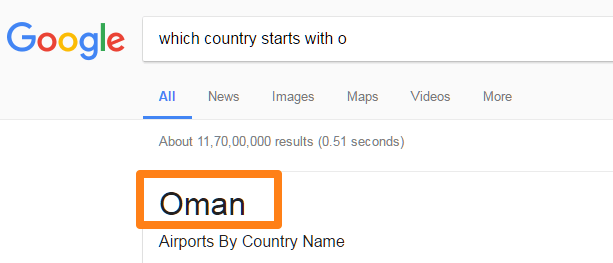


.webp?width=600&height=336&name=google-now-joke%20(1).webp)
